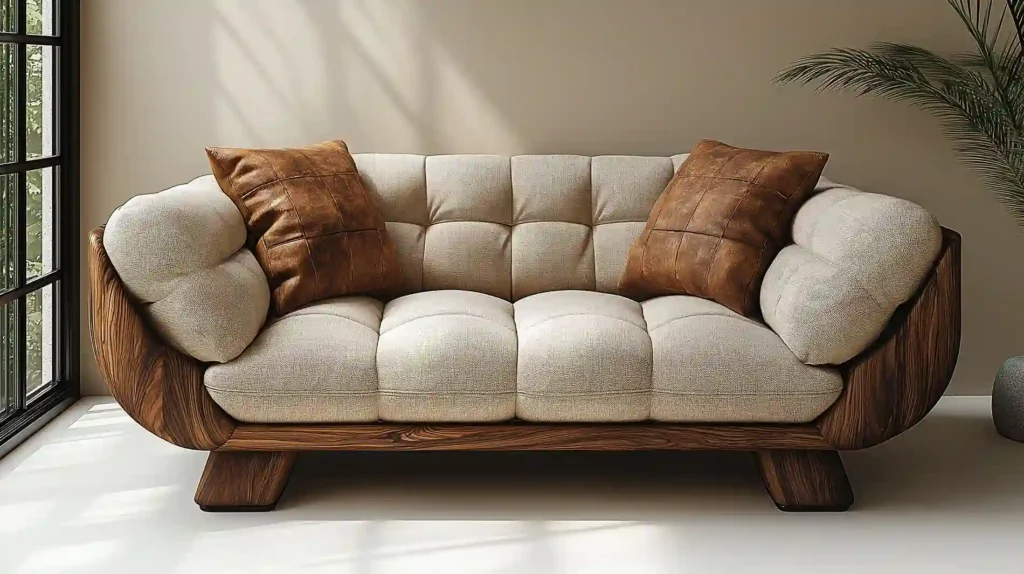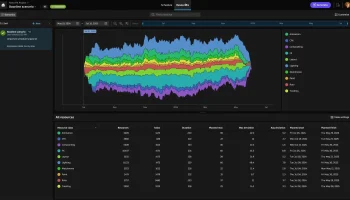AI 3D Model Generators are cutting-edge tools powered by artificial intelligence that can transform text prompts, images, or videos into 3D models ready for export. Platforms like Lumalabs.ai enable users to create detailed and realistic models in minutes, streamlining processes that were traditionally time-consuming and labor-intensive.
In the world of architectural renderings, these tools bring several transformative benefits:
- They significantly reduce production time.
- They offer unmatched flexibility in design.
- They open up endless creative possibilities.
In this article, we will explore the ways AI 3D Model Generators are revolutionizing architectural renderings. We’ll first examine how these tools simplify workflows by removing the need for large object libraries. Then, we’ll dive into their ability to spark creativity and generate unique design concepts. Next, we’ll discuss their flexibility in creating models from text, images, or videos. Finally, we’ll review three of the best tools available today: Lumalabs.ai, Kaedim, and Spline AI.
1. An infinite library at your fingertips
One of the major challenges in traditional architectural workflows is managing extensive 3D object libraries. These libraries are often expensive, cumbersome to organize, and limited in their variety. AI 3D Model Generators, such as Lumalabs.ai, completely remove this dependency by generating specific objects directly from text descriptions.
For instance, an architect might need a custom-designed modern lamp for a rendering. By simply typing in a description like “sleek geometric floor lamp with LED accents”, the tool produces a tailored model in moments. The advantages of this approach are clear:
- Time savings: No more searching through catalogs or customizing pre-existing models.
- Flexibility: Models are created on demand, tailored to the project’s needs.
- Streamlined workflows: The creative process is faster and more intuitive.
These capabilities not only save time but also enhance the creative freedom of professionals, as noted by one interior architect:
AI tools eliminate the hassle of object management, allowing us to focus entirely on our vision.
2. Unlock Infinite Creativity with AI 3D Model Generators for Architectural Renderings
Beyond simplifying processes, AI 3D Model Generators empower architects and designers to push the boundaries of creativity. These tools provide a platform to explore entirely new forms, materials, and designs with just a few clicks.
Consider this example: You’re designing a modern interior space and want to include a custom furniture piece that’s both functional and artistic. By typing a prompt like “sculptural armchair made of smooth wood with integrated metallic elements”, the tool generates several options based on your description. These models can then be refined, modified, or directly incorporated into your rendering.
This capability liberates architects from the constraints of pre-existing catalogs while offering a virtually infinite source of inspiration.
Impact:
- Quick experimentation: Instantly visualize unique design ideas.
- Creative freedom: Go beyond conventional catalogs and standard elements.
- Enhanced project value: Including custom and exclusive elements elevates the final output.
These tools don’t just save time—they amplify our creative potential by turning abstract ideas into tangible, unique designs.

3. AI 3D Models directly from Prompts, Images, or Videos
Another groundbreaking feature of AI 3D Model Generators is their ability to work with a variety of inputs, including text descriptions, images, or even videos. This flexibility makes them indispensable for modern workflows.
Imagine you’re working on an urban renewal project and have access to historical photographs of a building. Using a tool like Kaedim, you can convert these photos into accurate 3D models that serve as a base for your renderings. Similarly, a drone video capturing a landscape can be processed to recreate complex environments in 3D.
This versatility not only enhances the creative process but also simplifies collaboration between teams by enabling seamless integration of visual data at every stage.
The ability to integrate diverse visual inputs into our designs enriches every step of the process, from concept to execution.
4. 3 Great AI 3D Model Generators for Architectural Renderings
Lumalabs.ai
Lumalabs.ai specializes in generating photorealistic 3D models from text prompts. It is particularly valued for its precision and ability to quickly produce exportable models compatible with platforms like Blender or Unity. Whether designing residential interiors, commercial complexes, or public infrastructure, Lumalabs.ai delivers reliable, high-quality results in record time.
- Key strength: Its user-friendly interface allows architects to move from concept to visualization in minutes.
- Use case: Designing custom furniture for a modern living room or creating an urban park layout with bespoke elements.
Kaedim
Kaedim excels in converting 2D images into 3D models. Its powerful algorithm captures intricate details, making it ideal for enriching renderings with unique and highly specific objects.
- Key strength: Perfect for architects looking to reproduce real-world environments or incorporate existing visual elements into their designs.
- Use case: Creating a 3D version of a historical building from a photograph for a restoration project or replicating a specific furniture piece seen in an image.
Spline AI
Spline AI stands out for its ability to create interactive 3D models. Designed to support immersive visualizations, this tool is ideal for projects that require dynamic presentations or renderings intended for virtual reality experiences.
- Key strength: Intuitive creation of interactive environments that captivate clients during presentations.
- Use case: Designing interactive public spaces or immersive interior layouts for virtual reality showcases.
Why AI 3D Model Generators Are the Future of Architectural Renderings
AI isn’t just a tool; it’s a revolution redefining how we think, design, and create.
The rise of AI 3D Model Generators marks a turning point in architectural visualization. By simplifying model creation, unlocking creative possibilities, and enabling seamless integration of diverse visual inputs, these tools are transforming how professionals approach architectural renderings.
In the near future, these generators are expected to be fully integrated into leading rendering engines and modeling software. This will make their adoption even more seamless, enabling architects to transition from concept to execution with greater efficiency and creativity.
Embracing these technologies today means investing in tools that will shape the future of the industry.
Check out all the AI 3D model generators available on FutureBuiltAI or browse the amazing AI architecture tools available on the site.








